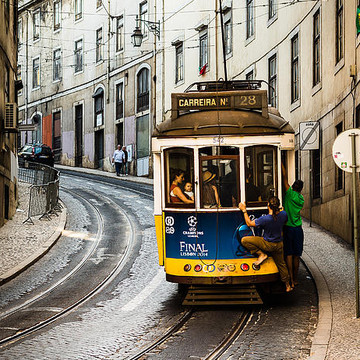Looking for design inspiration? Browse our curated collections!
Joined
2013
Followers
346
Visitors
641,581

Streetcars
[From Wikipedia, the free encyclopedia] The Lisbon tramway network (Portuguese: Rede de Electricos de Lisboa) serves the municipality of Lisbon, capital city of Portugal. In operation since 1873, it presently comprises five urban lines. The first tramway in Lisbon entered service on 17 November 1873, as a horsecar line. On 30 August 1901, Lisbon's first electric tramway commenced operations. Within a year, all of the city's tramways had been converted to electric traction. Up until 1959, the network of lines was further developed, and in that year it reached its greatest extent. At that time, there was a total of 27 tram lines in Lisbon, of which six operated as circle lines. As the circle lines operated in both clockwise and anticlockwise directions, each with its own route number, it is more correct to speak of a total of 24 tram routes, all of them running on 900 mm (2 ft 11 7/16 in) narrow gauge tram lines. The construction of the Lisbon Metro and the expansion of the bus system began the slow decline of the network. The five remaining lines only operates in the southern centre and west of the city. Despite the relevant tourist attraction, those lines are still very important because of sections of the city's topography can only be crossed by small trams. Tram 15 also connects the entire western river front of the city to the centre and allows a better flow of passengers with the bus system towards an area that still is not served by the metro.